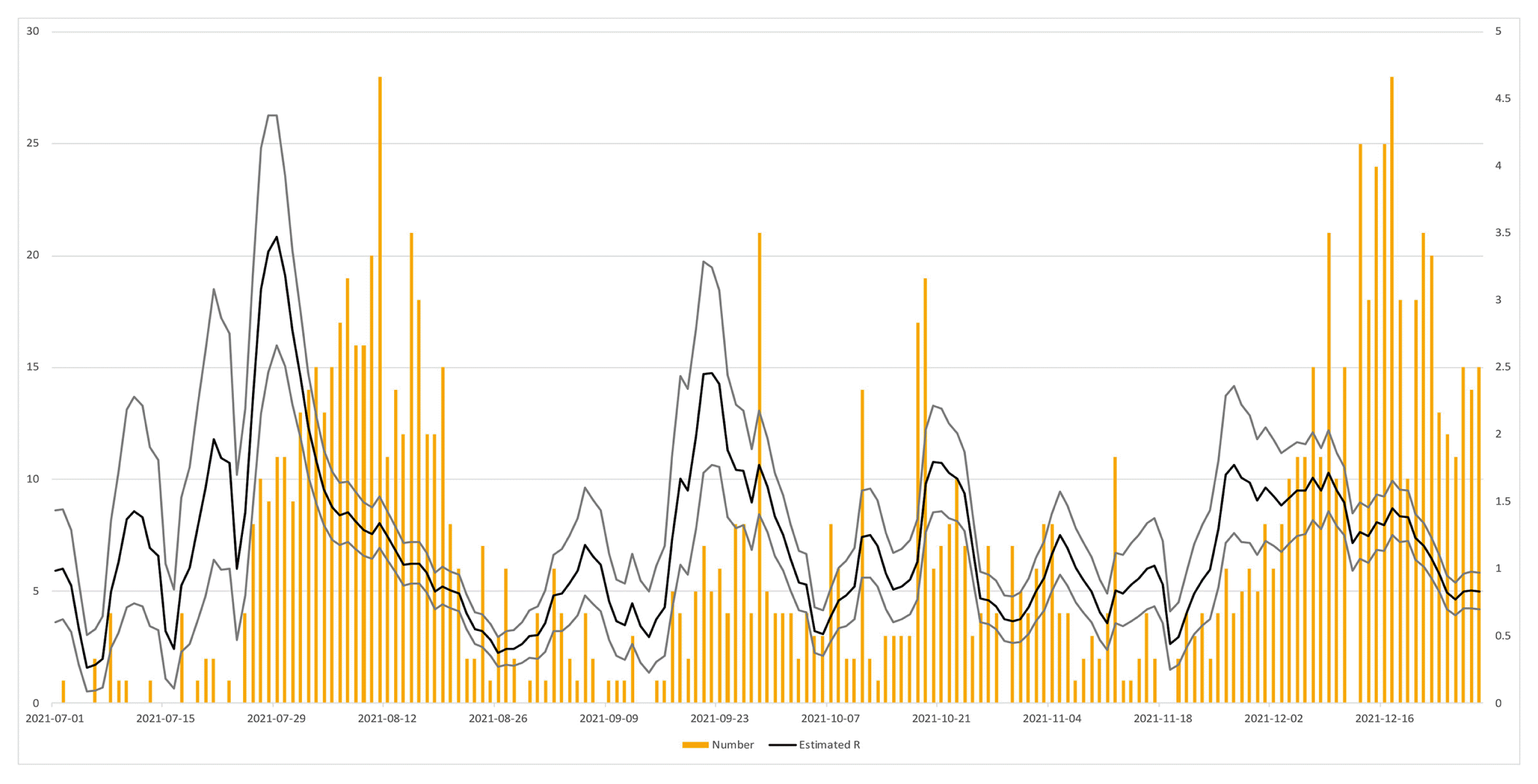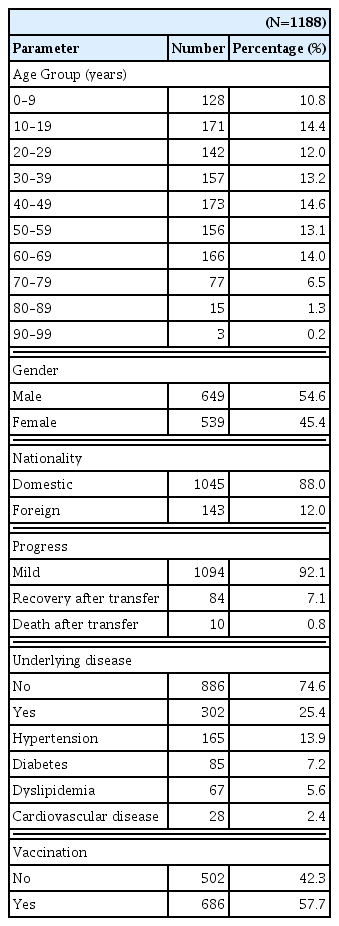References
3. Korea Disease Control and Prevention Agency. Guidelines for COVID-19 Response for Local Governments 13th Editionth ed.
4. An S, Gwak J, Kwon S, Baek S, Bae H, Kwon GY, et al. Relationship between RT-PCR Ct Values and Epidemiological and Clinical Characteristics of COVID-19 in Sejong City. Public Health Wkly Rep 2021;14(31):2229–35.
5. Korea Disease Control and Prevention Agency. 2020–2021 Infectious Disease Epidemiological Investigation Report
6. Lipsitch M, Cohen T, Cooper B, Robins JM, Ma S, James L, et al. Transmission dynamics and control of severe acute respiratory syndrome. Science 2003;300(5627):1966–70.
7. Chen T, Dai Z, Mo P, Li X, Ma Z, Song S, et al. Clinical Characteristics and Outcomes of Older Patients with Coronavirus Disease 2019 (COVID-19) in Wuhan, China: A Single-Centered, Retrospective Study. The Journals of Gerontology 2020;Sep. 1. 75(9):1788–95.
https://doi.org/10.1093/gerona/glaa089
.
8. Jeon CH, Leem JT, Chi GY, Choi GM, Kim HJ. Effect of Non-contact Korean Medical Treatment for Patients Recovering at Home with Positive Coronavirus Disease 2019 Diagnostic Test Results at a Local Public Health Center. Journal of Physiology & Pathology in Korean Medicine 2022;36(4):130–7.
9. Kang B, Chu H, Youn BY, Leem J. Prevention and management of adverse events following COVID-19 vaccination using traditional Korean medicine: An online survey of public health doctors. World J Clin Cases 2022;10(28):10053.
10. Cori A, Ferguson NM, Fraser C, Cauchemez S. A New Framework and Software to Estimate Time-Varying Reproduction Numbers During Epidemics. Am J Epidemiol 2013;Nov. 1. 178(9):1505–12.
https://doi.org/10.1093/aje/kwt133
.
12. Jang J, Park SY, Ahn SH, Yang S, Kim SS, Park SB. One-year report of COVID-19 outbreak in the Republic of Korea, January-December 2021. Public Health Wkly Rep 2022;15(15):231–4.
13. Gyeonggi Province Infectious Disease Control Support Team Issue Report. COVID-19 infection status and characteristics among foreign residents in Gyeonggi Province in 2021 2022;
14. Torok M, Nelson A, Alexander L, Mejia GC, MacDonald PD. Epidemic curves ahead. Focus on Field Epidemiology 2003;1(5):1–6.
15. Lim JS, Cho SI, Ryu S, Pak SI. Interpretation of the Basic and Effective Reproduction Number. Journal of Preventive Medicine and Public Health 2020;Nov. 30. 53(6):405–8.
16. Jang JG, Hur J, Choi EY, Hong KS, Lee W, Ahn JH. Prognostic Factors for Severe Coronavirus Disease 2019 in Daegu, Korea. Journal of Korea Medicine Science 2020;Jun. 2. 35(23):e209-0.
http://dx.doi.org/10.3346/jkms.2020.35.e209
.
17. Dorjee K, Kim H, Bonomo E, Dolma R. Prevalence and predictors of death and severe disease in patients hospitalized due to COVID-19: A comprehensive systematic review and meta-analysis of 77 studies and 38,000 patients. PLoS One 2020;Dec. 7. 15(12):e0243191.
https://doi.org/10.1371/journal.pone.0243191
.
18. Park HC, Kim DH, Cho A, Kim J, Yun K, sang Kim J, et al. Clinical outcomes of initially asymptomatic patients with COVID-19: a Korean nationwide cohort study. Ann Med 2021;Jan. 1. 53(1):357–64.
20. Kang B, Chu H, Youn BY, Leem J. Prevention and management of adverse events following COVID-19 vaccination using traditional Korean medicine: An online survey of public health doctors. World J Clin Cases 2022;Oct. 6. 10(28):10053–65.
21. The Association of Korean Medicine. 2020 Korean Medicine COVID-19 White Paper
23. Kim J, Chun H, Lee H, Leem J. The Role and Policy of Korean Medicine Doctor for the Prevention and Management of Infectious Diseases: A Mixed-Methods Approach. Journal of Korean Medicine 2023;44(2):45–59.
24. Li M, Zhu H, Liu Y, Lu Y, Sun M, Zhang Y, et al. Role of Traditional Chinese Medicine in Treating Severe or Critical COVID-19: A Systematic Review of Randomized Controlled Trials and Observational Studies. Front Pharmacol 2022;13:926189.






